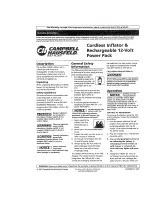
Language Dictionary - 4
65
*ESE
This command programs the Standard Event Status Enable register bits. The programming determines
which events of the Standard Event Status Event register (see *ESR?) are allowed to set the ESB (Event
Summary Bit) of the Status Byte register. A "1" in the bit position enables the corresponding event. All of
the enabled events of the Standard Event Status Event Register are logically ORed to cause the Event
Summary Bit (ESB) of the Status Byte Register to be set. The query reads the Standard Event The query
reads the Standard Event Status Enable register.
Table 4-6. Bit Configuration of Standard Event Status Enable Register
Bit Position
7
6
5
4
3
2
1
0
Bit Name
PON
0
CME
EXE
DDE
QUE
0
OPC
Bit Weight
128
64
32
16
8
4
2
1
PON = Power-on has occurred
CME = Command error
EXE = Execution error
DDE = Device-dependent error
QUE = Query error
OPC = Operation complete
Command Syntax
*ESE <NRf>
Parameters
0 to 255
Power-On Value
(See *PSC)
Examples
*ESE 129
Query Syntax
*ESE?
Returned Parameters
<NR1>(Register value)
Related Commands
*ESR? *PSC *STB?
CAUTION:
If *PSC is programmed to 0, the *ESE command causes a write cycle to nonvolatile
memory. Nonvolatile memory has a finite maximum number of write cycles. Programs
that repeatedly cause write cycles to nonvolatile memory can eventually exceed the
maximum number of write cycles and cause the memory to fail.
*ESR?
This query reads the Standard Event Status Event register. Reading the register clears it. The bit
configuration is the same as the Standard Event Status Enable register (see *ESE).
Query Syntax
*ESR?
Parameters
None
Returned Parameters
<NR1>(Register binary value)
Related Commands
*CLS *ESE *ESE? *OPC
*OPC
This command causes the instrument to set the OPC bit (bit 0) of the Standard Event Status register when
the has completed all pending operations. (See *ESE for the bit configuration of the Standard Event
Status register.)
Pending operations
are complete when:
u
all commands sent before *OPC have been executed. This includes overlapped commands. Most
commands are sequential and are completed before the next command is executed. Overlapped
commands are executed in parallel with other commands. Commands that affect output voltage,
current or state, relays, and trigger actions are overlapped with subsequent commands sent to the
dc source. The *OPC command provides notification that all overlapped commands have been
completed.
u
all triggered actions are completed
















































